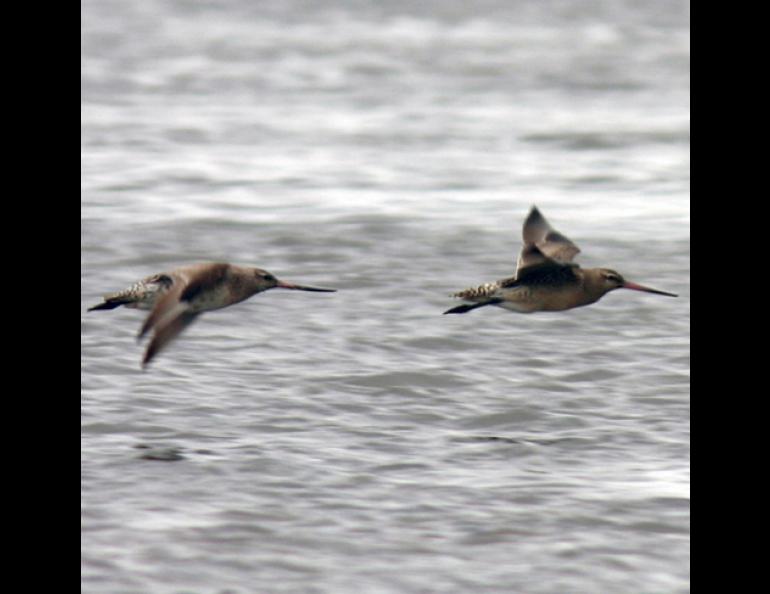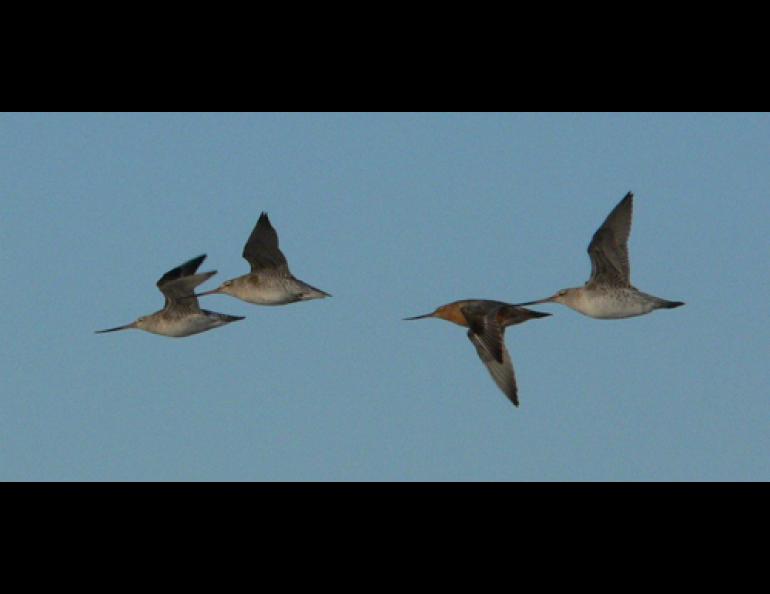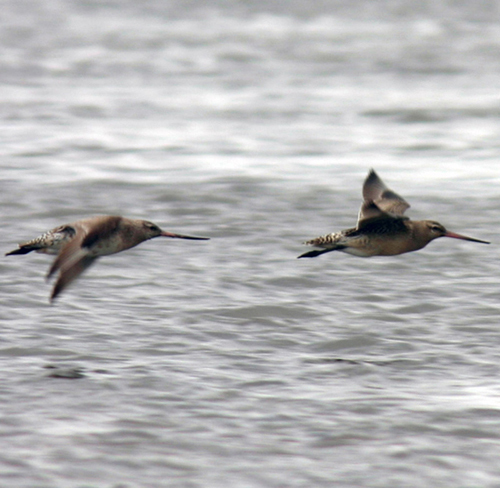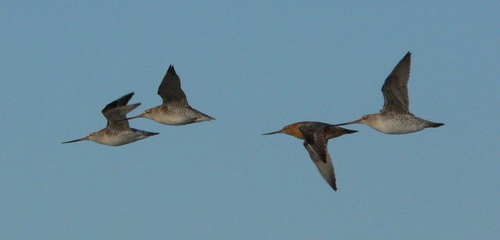

The bar-tailed godwit's nonstop to New Zealand
A New Zealand biologist emailed his colleague in Anchorage in early March with news of creatures heading toward Alaska to start a 15,000-mile round trip.
“They’re on their way,” Phil Battley wrote from Auckland after watching a group of bar-tailed godwits leap into the air and head out over the South Pacific. Those birds will head to the shores of the Yellow Sea near Korea, fatten up for a few weeks, and fly to their breeding grounds on Alaska’s tundra. After a summer of hatching and raising young godwits, the birds leave Alaska’s west coast to begin fall migrations back to New Zealand and eastern Australia.
On the return trip, godwits probably don’t make the pit stop in Asia. Some biologists think the birds stay airborne for almost one week, making a 6,800-mile beeline from Alaska to New Zealand or the coast of Australia.
If the bar-tailed godwit is flying the length of the Pacific nonstop, its migration is unrivaled by even the arctic tern, said Bob Gill, who studies shorebirds at the USGS Science Center in Anchorage. Arctic terns, which commute from Antarctica to the Arctic each year, land on the ocean and feed during their migration, but bar-tailed godwits can’t rest on the ocean during the five-to-six day trip, instead relying on fat reserves that sometimes double their weight.
In early fall, the birds use pencil-thin bills to gorge on fingernail-size clams in the mudflats of southwest Alaska.
“They put on so much fat, they have a sort of boxy appearance before they leave Alaska,” Gill said. “They probably use all of that fat and then burn protein (muscle) for added energy.”
Since the birds don’t need their guts to feed during flight, they’ve evolved to shrink them, replacing the weight with fat and muscle, Gill said. Even when bulging with fat, godwits are sleek flying machines.
“Godwits look like the Concorde when they’re flying,” Gill said.
The godwits have a range that long-distance jets would envy, and they also seem to be able to predict the weather.
“All the departures we’ve observed to date were associated with low pressure systems,” Gill said. “The birds get on the back side of these lows and get 900 to 1,200 kilometers (558 to 744 miles) of pretty strong tailwinds.”
Gill and other biologists think most of the 120,000 to 150,000 bar-tailed godwits that leave Alaska are flying straight to New Zealand or eastern Australia because there are few records of birds marked with leg bands anywhere on Asia during the return trip in the fall. Why would godwits choose such a drastic route when they could zip across the North Pacific and feed all the way down the coast of Asia?
They might avoid predators, they might avoid diseases, and they’d get to their wintering grounds much faster, Gill and his colleagues wrote in a recent article in The Condor. The birds might have taken the Asian route eons ago, Gill said, but birds that shaved thousands of miles by flying direct may have been the fittest ones that passed on their genes.
Though Gill and his coworkers have used computer models and records of tagged birds to surmise that the birds are making an incredible migration, they have not yet followed a bar-tailed godwit from Alaska over the vast Pacific. That may change this year, as Gill will travel to the Yukon-Kuskokwim delta in June with a veterinarian who will surgically install tiny transmitters inside five healthy female godwits. If the birds survive until fall migration, Gill and his colleagues will be able to track them via satellite and reveal that the godwits’ flight to the land down under has no layover.






